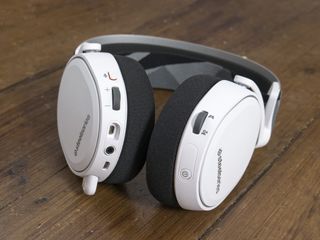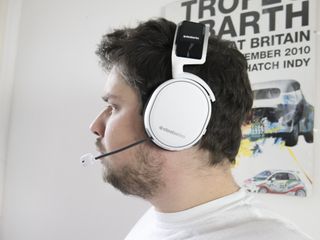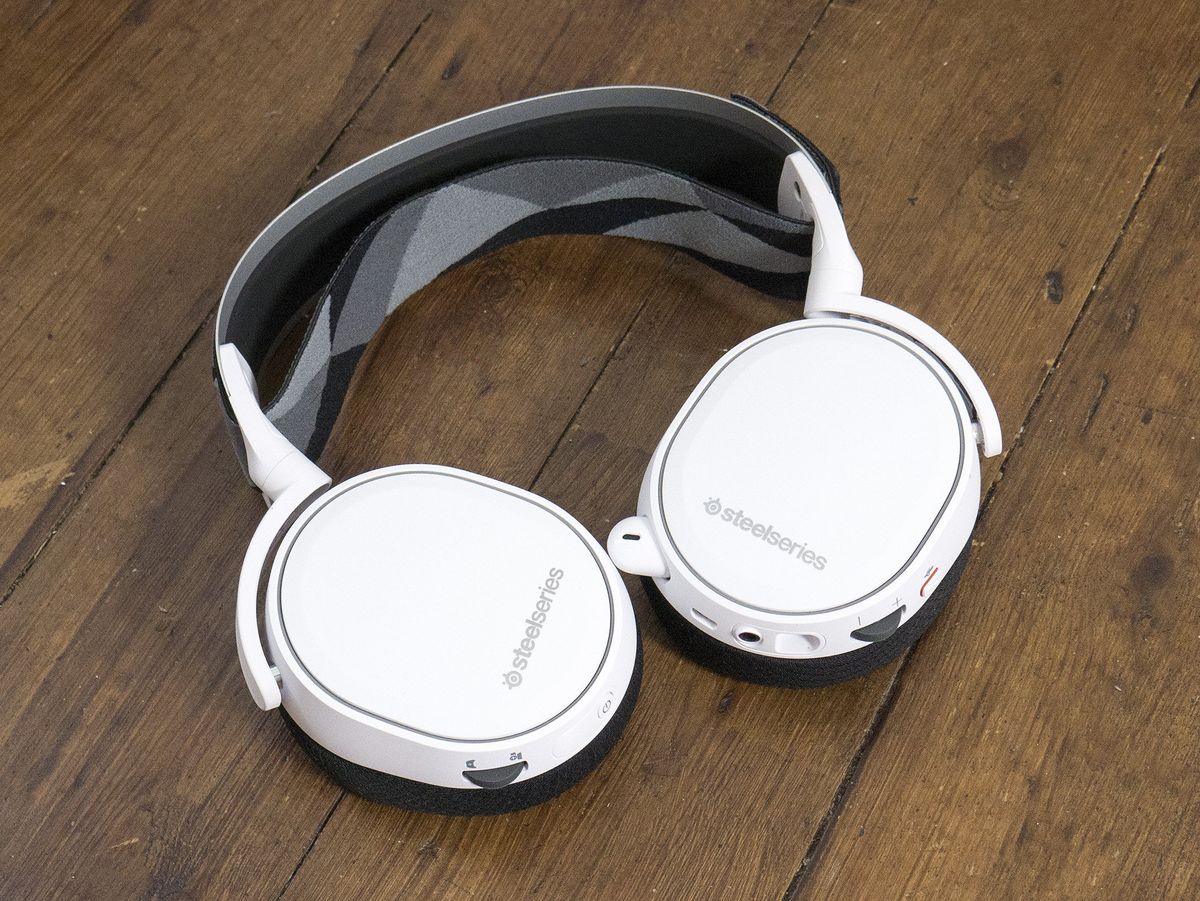PC headsets are a dime a dozen these days, but many of them aren't worth the space they take on your ears. The wireless headset market continues to grow, with compelling options from some of the market's big players.
One of those is the Arctis 7 from SteelSeries. And it's 100 percent a headset you should consider buying. It's truly tremendous. Here's why.
First, the techy bits:
- Neodymium drivers - 40mm.
- Effective range - 12 m, 40 ft.
- Headphone frequency response - 20Hz to 20,000 Hz.
- Headphone sensitivity - 98db.
- Headphone impedance - 32 Ohm.
- Headphone total harmonic distortion - < 3 percent.
- Microphone frequency response - 100Hz to 6,500Hz.
- Microphone pattern.
- Bidirectional.
- Microphone sensitivity - 48 db.
- Microphone impedance - 2,200 Ohm.
A unique design

The design of the Arctis 7 is unlike any other headset out there right now, and that's not just because of its striking white paint job — black is also available. It utilizes a ski-goggle-style headband — decorated in an arctic camo design — that wraps above and below the metal band across the top of the headset.
This is how you adjust the size to fit your head and also why the Arctis 7 is one of the most comfortable headsets you'll ever place upon your head. The fabric band supports the weight of the headset, removes all pressure points and acts like it suspends the heavier bits above you. It also makes it much more adjustable, to get that perfect fit. It's something you'll be able to wear for extended periods with ease.
It's probably the most comfortable headset I've ever used. The AirWeave ear cushions are a delight, too. You're also not limited to just the bits that come in the box; the Velcro bands can be swapped out to create a new look with ease.
It connects to a PC or PlayStation 4 through the included 2.4GHz wireless dongle, but in the box you also get a regular 3.5mm cable so you can use it with the Xbox One. You don't get the 7.1 surround sound effects on the consoles, but the Arctis 7 is very much something you can buy once and use everywhere. You can even use it with your phone, if you just want one set of headphones for everything.

Get inside the Arctis 7, and you'll find the same S1 speaker drivers used in SteelSeries' flagship headsets. What that means for you is that you're getting similar quality sound at a big price reduction. That sound promises to be well balanced and detailed in-game, and at a price that's right on the money. You get plenty of ear filling explosions, but without the overly bass-heavy characteristics found on some other headsets.
Of course, you do lose out compared to a wired alternative, that's just physics, but as far as wireless headsets go the Arctis 7 is up there with the best of them. The experience on a console compared to the PC feels a little watered down, but it's still very good. And on PC you get great positional sound from the DTS surround.
SteelSeries claims the wireless range of the Arctis 7 is 12m, and in my unscientific tests, it passed with flying colors. Even in the room farthest away from my PC, the sound remains crystal clear and without interruption. By contrast, the Razer Man O War is supposed to have a longer range, but it didn't work in the same position as the Arctis 7.
The goodness stretches to the microphone, or at least to the part of the microphone that records your voice. Steelseries calls it ClearCast, and again it's not a patch on a wired mic, but your raid buddies will be impressed with how good you sound.

The not so good bits
What you won't be impressed with is the giant red LED right beneath your eye that runs the length of the microphone. It's completely unnecessary and far too distracting. I have LEDs all over my office, and I still wanted to rip this one right off. The mic retracts when you're not using it, and the LED then goes away, but I still hate it.
What's also not particularly welcome is the proprietary nature of the cabling. The Arctis 7 charges over micro USB, which is fine. But there's another socket you attach the cable to for updating the headset's firmware and customizing its features, as well as connecting it to your Xbox One or mobile device.
So you have two cables to lose that you really don't want to lose. Honestly, whatever the technical reasons for it, there isn't an excuse good enough for not sticking with standards.
That aside, everything else that you find on the cups is good stuff. You have on-ear controls for volume, power, microphone muting and adjusting the mix of game sound versus chat audio. That you don't lose any of these features moving to wireless is a good thing, because there's still a tendency from some others to go back to basics when removing the cable.
Like all purveyors of gaming accessories these days, Steelseries has a software companion to its products. Engine 3 is where you'll customize and tweak your Arctis 7 and other assorted SteelSeries goodies, and it's mostly lightweight and easy to use.
You don't have to use it to get a great experience with the Arctis 7, but it's still a recommended download for one key reason: It's how you update the firmware.

The verdict: The Steelseries Arctis 7 is a terrific headset, truly one of the best you can buy right now. It's supremely comfortable, sounds fantastic and doesn't cost a ridiculous sum of money.
The negatives about it are more annoyances than deal breakers, and I'd have been happier if there was a carry case included to keep that sharp white paint job looking fresh. But it's impossible not to recommend the Arctis 7 to anyone who's looking for a new headset.
The fact that you can use it with any of your gaming devices alone elevates it above something such as the Razer Man O War, but how well it works is the real kicker.
Pros:
- Ridiculously comfortable.
- Great sound.
- Well priced.
- Works with PC, console and mobile.
Cons:
- Proprietary cables .
- Annoyingly bright LED on microphone.

Richard Devine is a Managing Editor at Windows Central with over a decade of experience. A former Project Manager and long-term tech addict, he joined Mobile Nations in 2011 and has been found on Android Central and iMore as well as Windows Central. Currently, you'll find him steering the site's coverage of all manner of PC hardware and reviews. Find him on Mastodon at mstdn.social/@richdevine
